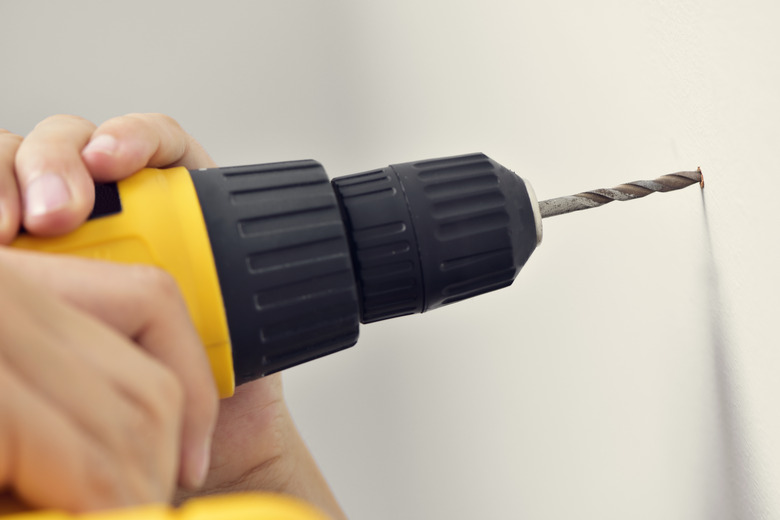Drill Bit Is Stuck In The Stud
We may receive a commission on purchases made from links.
Anyone who has drilled into wet wood or pressure-treated wood has undoubtedly had the experience of a stuck drill bit. It's less common when drilling into studs because studs are made of softwood, and they are dry, but it does happen. The problem is compounded when you're drilling small holes, and the drill bit not only gets stuck but breaks.
When the drill bit is still intact, you can usually extract it by running your drill in reverse, and if that fails, you can use a tool, such as a pair of vise grips, to rotate it in reverse and pull it out. If the drill bit broke off in a stud, that's a different problem that calls for a different solution. Depending on whether or not you have access to the opposite side of the stud, you have more than one option for extracting the bit.
The Bit Hasn't Broken
The Bit Hasn't Broken
The most common reason for a drill bit to get stuck in wood is that the person driving it was in a hurry and tried to push the bit through the wood rather than giving it time to bore its way through. Bits will also get stuck if you change the angle of the drill while the bit is working. This is usually just a minor inconvenience.
Simply set the drill in reverse and operate it at a low speed. The bit should work its way out of the wood on its own. If the bit is really stuck, the drill chuck may lose its grip, and if that happens, stop the drill and tighten the chuck, either by hand or using the chuck key. If the drill doesn't have a reverse setting or you can't tighten the chuck, loosen the chuck, release the bit, clamp locking pliers onto the bit, and use this tool to rotate the bit counterclockwise. Be careful not to bend the bit because if it breaks, you have a completely different problem.
The Bit Has Broken
The Bit Has Broken
Before you go to the trouble of extracting a broken bit, ask yourself whether you actually need to do so. It's broken, so it's no longer useful, and you could simply leave it where it is and drill a new hole close to it.
When leaving the broken bit in the stud is not an option, the best way to extract it is to use a screw extractor. This is a cone-shaped drill bit with serrations that bites into the metal and extracts screws and drill bits when you operate the drill in reverse. To use it as a broken drill bit extractor, you first need to drill a larger hole over the stuck bit to give the extractor room to contact it. Once you do that, push the tip of the extractor into the hole and apply pressure to help the extractor tip bite into the metal while you operate the drill.
An alternative extraction method that works if you have access to the opposite side of the stud is to drill a hole exactly opposite the hole you drilled with the stuck bit. When the second hole contacts the first one, you can insert a nail and hammer the screw back out of the original hole.
Drill Bit Stuck in Chuck
Drill Bit Stuck in Chuck
A less common problem is that the drill bit is misaligned with the chuck when you insert it, and it gets stuck when you tighten the chuck. Most chucks these days are designed to be tightened by hand, and if you have one of these, just hold the chuck while you operate the drill in reverse (slowly), and that should free the bit. If the chuck has a key, use that to loosen the chuck.
It's rare for these solutions not to work, but if they don't, clamp a pair of locking pliers onto the bit, hold on firmly and wiggle and pull on the bit to loosen it. It usually helps to use the power of the drill by running it in reverse but do it slowly. You can injure your wrist if you operate the drill full speed while holding the pliers.
